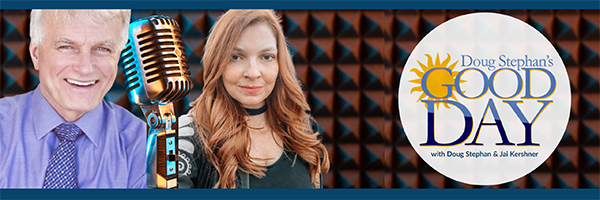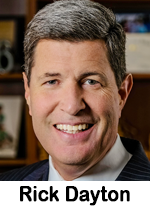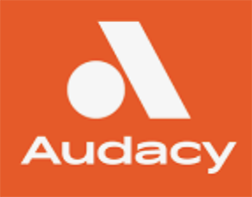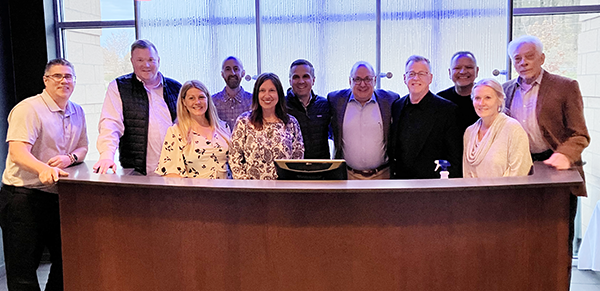Doug Stephan’s “Good Day” Restructures for Weekends and Flex Schedule

Talk host Doug Stephan announces that his daily morning radio show – airing consistently for the past 36 years – will cease its Monday through Friday live distribution via Wegner/Echobox on May 3. The current “Good Day Show with Doug Stephan & Jai Kershner” will be transitioned into two four-hour weekend programs, “Good Day Saturday” and “Good Day Sunday” that will be delivered to affiliate stations via FTP. Stephan says the two programs will be hosted by himself and Jai Kershner and will continue to feature regular and special guests. The programs will be modular so that in addition to airing them on the weekend, stations can air them as a one- or two-hour program. Stephan adds, “This isn’t goodbye, but it is changing when and how we will deliver our program. Weekends are a vast wasteland of infomercials and reruns. The content on this new show aligns with the same positive approach – features and friends that listeners have become accustomed to from ‘Good Day.’ This new program is deliberately formatted so each hour stands on its own and can be used in any daypart on the weekend or weekdays, and it can be aired more than once, should you want to do that.” United Stations Media Networks is handling FTP distribution and Stephan notes that his podcast programs remain unchanged, including the daily “Good Day” podcast. For more information contact Mike McVay at mikemcvay@mcvaymedia.com or Doug Stephan at doug.stephan@gmail.com.



 KDKA-TV personality who became afternoon drive host at news/talk KDKA-AM, Pittsburgh in December of 2020. Colin Dunlap appears to be set to continue hosting the afternoon drive show solo. Audacy has stated that these staff cuts will amount to “less than 2%” of the company’s workforce.
KDKA-TV personality who became afternoon drive host at news/talk KDKA-AM, Pittsburgh in December of 2020. Colin Dunlap appears to be set to continue hosting the afternoon drive show solo. Audacy has stated that these staff cuts will amount to “less than 2%” of the company’s workforce.

 Mike Kadlik is one former Audacy staffer who took to social media to announce that he’s now a free agent. He posted to X, “My time with @WEEI has come to an end due to company-wide reductions. Very tough to swallow right before the NFL Draft, but I’m looking forward to continuing covering the #Patriots in some way.” Though the total number of people being let go is not known, it’s expected that more former employees will use social media to let the industry know they are available.
Mike Kadlik is one former Audacy staffer who took to social media to announce that he’s now a free agent. He posted to X, “My time with @WEEI has come to an end due to company-wide reductions. Very tough to swallow right before the NFL Draft, but I’m looking forward to continuing covering the #Patriots in some way.” Though the total number of people being let go is not known, it’s expected that more former employees will use social media to let the industry know they are available.  workers’ first contract. The union says iHeartMedia has “violated Section 8(a)(1) of the National Labor Relations Act ‘by restricting protected Section 7 speech, by engaging in intimidating conduct and by interrogating employees about their support for the union.’”
workers’ first contract. The union says iHeartMedia has “violated Section 8(a)(1) of the National Labor Relations Act ‘by restricting protected Section 7 speech, by engaging in intimidating conduct and by interrogating employees about their support for the union.’”  The union’s complaint adds, “When we have posted flyers about the union, management has removed these materials within the day, often within minutes… union members have received emails discouraging this activity, pointing out company policies about distributing literature in working areas, without acknowledging our federally protected right to discuss our working conditions or to distribute information about our union to our colleagues. Non-bargaining-unit employees and managers have used common work areas to openly disparage our union literature and efforts to inform unit members.” iHeartMedia has not responded publicly to the grievance.
The union’s complaint adds, “When we have posted flyers about the union, management has removed these materials within the day, often within minutes… union members have received emails discouraging this activity, pointing out company policies about distributing literature in working areas, without acknowledging our federally protected right to discuss our working conditions or to distribute information about our union to our colleagues. Non-bargaining-unit employees and managers have used common work areas to openly disparage our union literature and efforts to inform unit members.” iHeartMedia has not responded publicly to the grievance. 
 through her leadership and accomplishments in the industry, champions and creates opportunities for other women in radio to further their careers. MIW board president Ruth Presslaff comments, “Corinne’s remarkable career firmly establishes her as a Trailblazer. In addition to all she’s accomplished, her selfless devotion to mentoring women and men, and absolute delight in helping them achieve their goals, is the essence of who she is. She is truly a mentor of mentors. We are thrilled to recognize her with our highest award.” Baldassano says, “I am honored to accept this year’s Trailblazer Award from MIW. As I built my career, it was natural for me to offer guidance to others who also wanted to take a similar path. And it’s turned out to be one of the most important and satisfying things I’ve ever done. I’m proud of those I have mentored, and I’m humbled to be recognized by an organization committed to fostering the growth of broadcasting’s next generation of women. I’m happy to see my work and theirs come full circle. Thank you!”
through her leadership and accomplishments in the industry, champions and creates opportunities for other women in radio to further their careers. MIW board president Ruth Presslaff comments, “Corinne’s remarkable career firmly establishes her as a Trailblazer. In addition to all she’s accomplished, her selfless devotion to mentoring women and men, and absolute delight in helping them achieve their goals, is the essence of who she is. She is truly a mentor of mentors. We are thrilled to recognize her with our highest award.” Baldassano says, “I am honored to accept this year’s Trailblazer Award from MIW. As I built my career, it was natural for me to offer guidance to others who also wanted to take a similar path. And it’s turned out to be one of the most important and satisfying things I’ve ever done. I’m proud of those I have mentored, and I’m humbled to be recognized by an organization committed to fostering the growth of broadcasting’s next generation of women. I’m happy to see my work and theirs come full circle. Thank you!”  Commerce vowed to sue the FTC to block the proposal, calling it ‘an unlawful power grab’ in a statement shortly after the vote. The chamber, as well as the two dissenting [FTC] commissioners, has argued that the FTC doesn’t have the authority to address this issue and that it should be left to the states.” The Times piece notes that the rule becomes law 120 days after being published in the Federal Register – meaning sometime in late August – but that legal challenges could block or delay the change. In the radio industry, most on-air talent, programmers, and sales staff who work under written contracts have a noncompete clause that prevents them from working “across the street” usually for six months. If this new policy stands, it will be a monumental change for radio companies.
Commerce vowed to sue the FTC to block the proposal, calling it ‘an unlawful power grab’ in a statement shortly after the vote. The chamber, as well as the two dissenting [FTC] commissioners, has argued that the FTC doesn’t have the authority to address this issue and that it should be left to the states.” The Times piece notes that the rule becomes law 120 days after being published in the Federal Register – meaning sometime in late August – but that legal challenges could block or delay the change. In the radio industry, most on-air talent, programmers, and sales staff who work under written contracts have a noncompete clause that prevents them from working “across the street” usually for six months. If this new policy stands, it will be a monumental change for radio companies.  Soros, would become the largest shareholder in New Audacy and that Soros would “control these radio stations to advance their particular brand of activism.” Further, MRC objects saying that the FCC has an obligation to complete a full and thorough review and that the Commission is being asked to approve the change in ownership without this review, specifically
Soros, would become the largest shareholder in New Audacy and that Soros would “control these radio stations to advance their particular brand of activism.” Further, MRC objects saying that the FCC has an obligation to complete a full and thorough review and that the Commission is being asked to approve the change in ownership without this review, specifically  available across iHeartMedia’s broadcast, digital and podcast platforms and everywhere podcasts are heard. Talent to be heard on the platform include sports media personality Sarah Spain and WNBA legend & three-time Olympic gold medalist, Sheryl Swoopes, with more talent to be announced in the coming weeks. Deep Blue is led by agency veteran Laura Correnti as founder and CEO and WNBA legend Sue Bird as chief strategy officer. iHeartMedia chief marketing officer Gayle Troberman states, “Women’s sports are on fire and so is audio. The timing is perfect to deliver on the massive fan excitement today and most importantly use the power of iHeart’s massive audience reach to ensure women’s sports gets the attention it deserves.
available across iHeartMedia’s broadcast, digital and podcast platforms and everywhere podcasts are heard. Talent to be heard on the platform include sports media personality Sarah Spain and WNBA legend & three-time Olympic gold medalist, Sheryl Swoopes, with more talent to be announced in the coming weeks. Deep Blue is led by agency veteran Laura Correnti as founder and CEO and WNBA legend Sue Bird as chief strategy officer. iHeartMedia chief marketing officer Gayle Troberman states, “Women’s sports are on fire and so is audio. The timing is perfect to deliver on the massive fan excitement today and most importantly use the power of iHeart’s massive audience reach to ensure women’s sports gets the attention it deserves. WEEI, Boston’s midday show “Gresh & Fauria” with Andy Gresh and Christian Fauria, and night host Rich Keefe; WSCR, Chicago’s “Parkins & Spiegel” with Danny Parkins and Matt Spiegel; WXYT-FM, Detroit’s “Karsh & Anderson” with Doug Karsch and Scott “Gator” Anderson, and “The Mike Valenti Show with Rico”; WJFK-FM, Washington’s midday host Brian Mitchell and evening host Craig Hoffman.
WEEI, Boston’s midday show “Gresh & Fauria” with Andy Gresh and Christian Fauria, and night host Rich Keefe; WSCR, Chicago’s “Parkins & Spiegel” with Danny Parkins and Matt Spiegel; WXYT-FM, Detroit’s “Karsh & Anderson” with Doug Karsch and Scott “Gator” Anderson, and “The Mike Valenti Show with Rico”; WJFK-FM, Washington’s midday host Brian Mitchell and evening host Craig Hoffman.